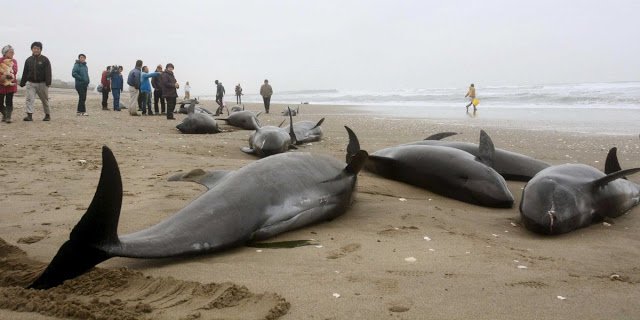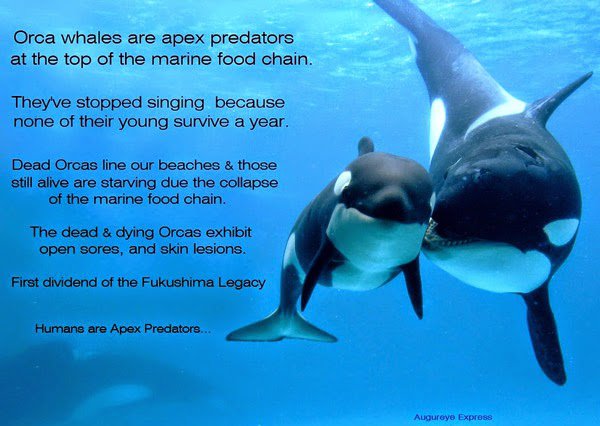Since 2011, the tradgedy surrouding the fukushima disasater is a perisitent reminder of the power of the Earth and humankind’s inadvertent wake of destruction.
In 2010, scientists lamented the stunning amount of toxic and heavy metals — including aluminum, chromium, titanium, mercury, silver and lead — discovered in whales that lived thousands of miles away from civilization.
According to a report by Common Dreams, these “pollutants were threatening the human food supply.”
Fast forwarding to today, five years past that fateful day in Fukushima, the struggling orca (killer whale) population is in even worse shape. Are they headed for extinction?
… the incidence of orca deaths — not just of infants, but full-grown specimens as well — has risen sharply since the accident occurred in 2011 and as the radiation has made its way across the Pacific Ocean to the West Coast of North America…
“The discovery of an orca carcass off the coast of British Columbia — that of a 19-year-old orca female, which was believed to be in the late stages of pregnancy, is just one example of the recent orca deaths that have scientists and conservationists worried. . .
Ken Balcomb, executive director of the Center For Whale Research in Friday Harbor, Washington, said: ‘We haven’t had any survivals in babies for a couple of years. We have had stillborns and newborns die… It’s like zero survival in birth rate here.’”



Facebook Comments